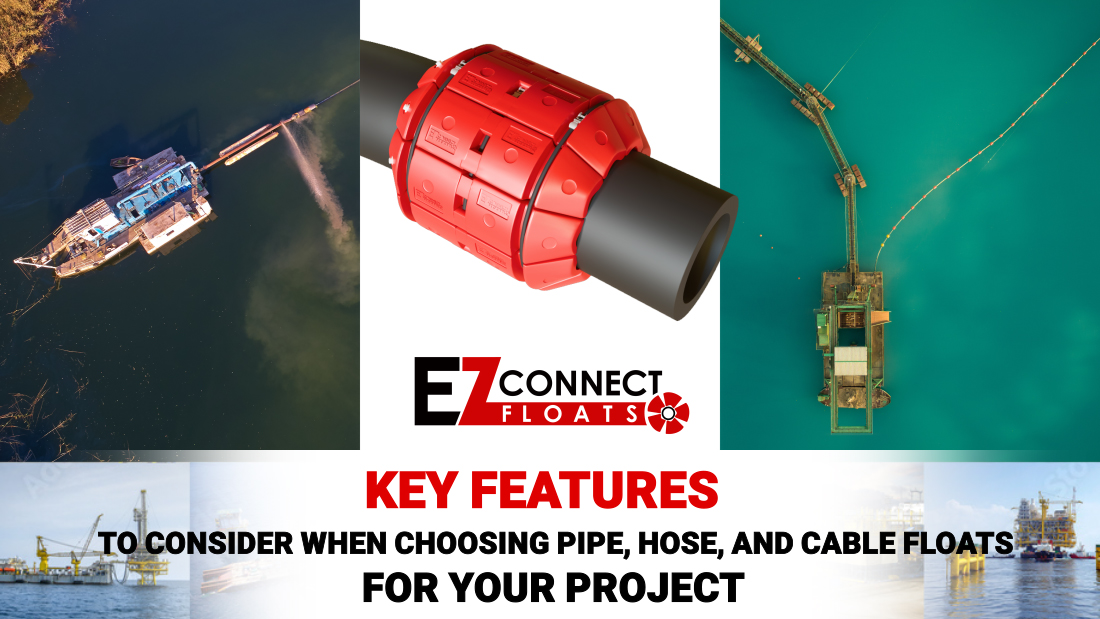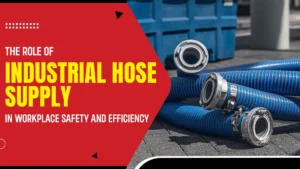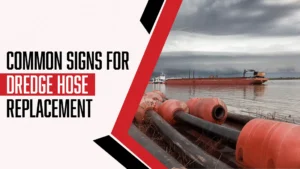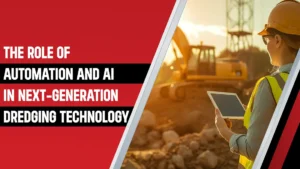
Selecting Pipe, Hose, and Cable Floats: Key Features
Pipe, hose, and cable floats are essential components in various industries, providing buoyant support and protection for submerged or floating infrastructure. Whether you’re involved in marine construction, aquaculture, dredging, or offshore energy projects, selecting suitable floats is crucial for ensuring the success and longevity of your project. In this blog post, we’ll explore the key features to consider when choosing pipe, hose, and cable floats to meet your project’s specific requirements.
Key Features to Consider
1. Buoyancy Capacity
- Accurate Calculation: Begin by accurately calculating the weight of the submerged infrastructure, including pipes, hoses, cables, and any additional loads they may encounter during operation.
- Environmental Factors: Consider environmental factors such as water depth, currents, tidal fluctuations, and wave action, which can affect the buoyancy requirements of the floats.
- Safety Margins: Incorporate safety margins into your buoyancy calculations to ensure the chosen floats can safely support the anticipated loads under various operating conditions.
2. Material Durability
- Corrosion Resistance: Select pipe floats made from materials known for their corrosion resistance, such as high-density polyethylene (HDPE) or polyurethane, to withstand exposure to saltwater, chemicals, and UV radiation.
- Longevity: Evaluate the durability and expected lifespan of the float materials to ensure they can withstand the harsh marine environment without deteriorating or requiring frequent replacement.
- Impact Resistance: Consider the float’s ability to withstand impacts from debris, vessel collisions, or other potential hazards in the marine environment, minimizing the risk of damage or failure.
3. Flexibility and Adaptability
- Modular Design: Opt for cable floats with a modular design that allows for easy customization and adjustment to accommodate various pipe, hose, or cable diameters and configurations.
- Adjustable Mounting: Choose hose floats with adjustable attachment mechanisms or mounting options to accommodate different installation requirements and ensure secure and stable positioning underwater.
- Compatibility: Ensure that the chosen pipe floats are compatible with your project’s specific infrastructure components and installation methods, minimizing the need for modifications or additional accessories.
4. Environmental Impact
- Sustainable Materials: To reduce the project’s carbon footprint and promote sustainability, prioritize hose floats made from recyclable materials or those with minimal environmental impact.
- Low Drag Coefficients: Select hose floats with low drag coefficients to minimize energy consumption and disturbance to marine ecosystems, particularly in environmentally sensitive areas.
- Retrieval and Reuse: Choose pipe floats designed for easy retrieval and reuse after project completion, minimizing waste generation and maximizing resource efficiency.
5. Installation and Maintenance
- Lightweight Design: Opt for lightweight and easy-to-handle cable floats, facilitating quick and efficient deployment underwater by minimizing the need for heavy lifting equipment or specialized tools.
- Minimal Maintenance: Select hose floats that require minimal maintenance and are designed for long-term reliability, reducing downtime and operational disruptions caused by routine inspections or repairs.
- Accessibility: When choosing pipe floats, consider the accessibility of the installation site and the ease of access for maintenance activities, particularly in remote or challenging locations.
6. Compliance and Certification
- Regulatory Compliance: Ensure the chosen hose floats comply with relevant industry standards, regulations, and guidelines, particularly in safety-critical applications such as offshore oil and gas or telecommunications.
- Certification: Look for pipe floats that have undergone rigorous testing and certification processes by recognized authorities or third-party organizations to verify their performance, reliability, and compliance with applicable standards.
- Documentation: Obtain detailed documentation, including test reports, certificates, and manufacturer specifications, to demonstrate compliance and ensure traceability throughout the project lifecycle.
By carefully considering these requirements when selecting pipe, hose, and cable floats for your project, you can make informed decisions that will contribute to the success, safety, and sustainability of your operations in the marine environment.
Conclusion:
Choosing the suitable pipe, hose, and cable floats is essential for the success and efficiency of your project. By considering factors such as buoyancy capacity, material durability, flexibility, environmental impact, installation, maintenance, and compliance, you can select floats that meet the specific requirements of your project while ensuring safety, reliability, and environmental sustainability. Invest time and effort in evaluating your options and consulting with experts to make informed decisions that will contribute to the success of your project in the long run.
Have Questions?
Get in touch with us now!
Related Blogs

The Role of Industrial Hose Supply in Workplace Safety and Efficiency
In high-stakes industries such as oil and gas, mining, manufacturing, dredging, and defense, industrial hoses serve as vital connectors in daily operations. Whether transferring hazardous

Common Signs For Dredge Hose Replacement
Dredge hose is an essential component in mining, oil and gas, and heavy industries, where it is used to transport materials such as sediment, slurry,

The Role of Automation and AI in Next-Generation Dredging Technology
Dredging technology has undergone a quiet but powerful transformation over the past decade. A purely mechanical process, which included heavy machinery, manual supervision, and reactive
